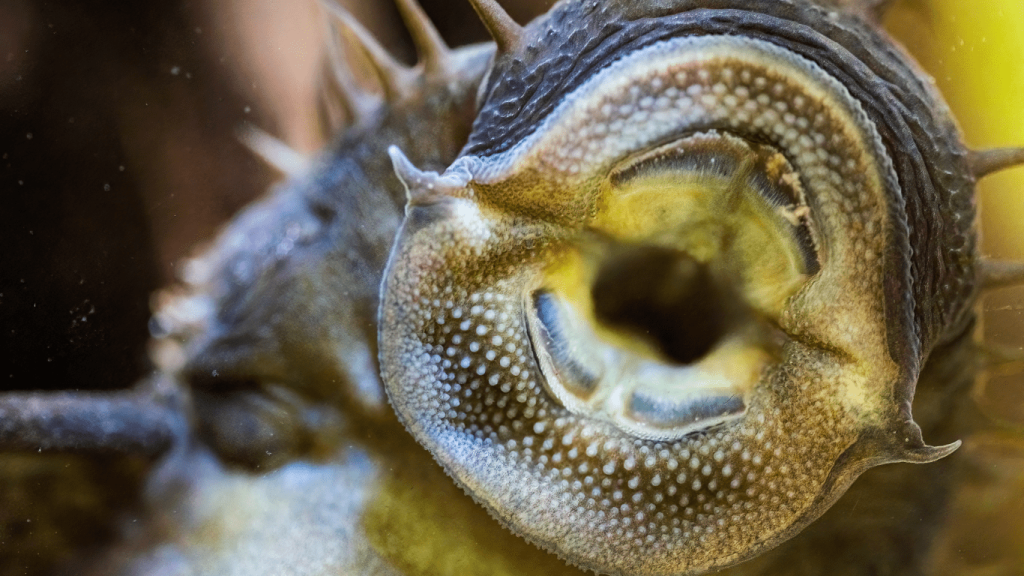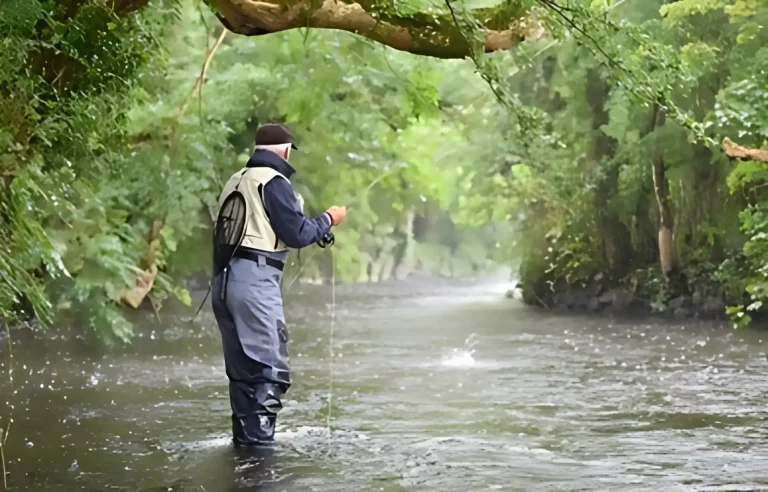Do Catfish Have Teeth?
Catfish are a well-loved species of fish among anglers. Catfish are becoming a popular target for beginner anglers.
Frequently asked topics include how to catch it, whether catfish have teeth, what kind of gear and bait to use, and where to get it.

No matter if we release it or keep it once we capture it. Do not leave hooks in its mouth.
Inexperienced anglers often wonder if catfish have teeth when they remove their hooks from the fish. Is it possible for a catfish to attack or injure me?
If you have any questions about catfish’s dangers, this article will answer them.
If you’ve ever wondered if catfish have teeth, you’re not alone. It’s common to hear this inquiry when you’re trying to remove a hook from a catfish’s mouth and there is nothing in the mouth.
Is a catfish toothless? When they don’t have any teeth, how do they chew food? Putting your hands in a catfish’s mouth is a common way to catch one.
In this essay, I’ll address all of those things and more. I’ll even go over how to handle a catfish properly and how to treat catfish “bite” and “sting” wounds.
Contents
- 1 Do catfish have teeth?
- 2 Can catfish bite me?
- 3 What is noodling for catfish?
- 4 Do catfish sting?
- 5 Where are the barbs on catfish?
- 6 How to Safely Handle a Catfish
- 7 Small catfish are more dangerous
- 8 Hold small catfish behind the dorsal fin
- 9 Use a net and lip grip for large catfish
- 10 Cut off the barb
- 11 How to Treat Catfish Stings
- 12 How to Treat a Catfish “Bite”
- 13 Final Thoughts
Do catfish have teeth?
Yes, catfish do have teeth. Don’t worry. Catfish don’t have incisor teeth like sharks or pike. Instead, catfish have cordiform teeth. These teeth are tiny and feel more like sandpaper than teeth.
These tiny teeth help catfish grind down their food. Catfish primarily feed in the mud, so they don’t need big incisor teeth to tear apart their prey.
Can catfish bite me?
Catfish don’t have incisor teeth. Thus they can’t bite you. There is zero chance of being bitten by a catfish, as they don’t even bite their prey! A slight abrasion, comparable to a bass thud, is the worst you can expect from a catfish “bite.” Rub your finger against sandpaper—that’s a sensation you’ll get.
Even though catfish can sting you, they are nonetheless dangerous to handle due to their evil nature. Nature is something I’ll get to later.
What is noodling for catfish?
Noodling for catfish is nothing more than a hand-based method of catching catfish. You put your hand in a hole to see a catfish and grasp it by the mouth with one hand. There is no need to worry about catfish teeth because they don’t have any. It’s possible to put your hand in a hole without thinking about the consequences.
Is noodling for catfish safe?
You might believe that noodling for catfish is safe because they don’t have teeth. Don’t expect it to rip your hand off; they don’t have the fangs for that.
The dangers of noodling include being bitten by an alligator, snake, or several other reptiles and amphibians. If you noodle with your hands tied behind your back, a gigantic catfish may leave a massive scratch on your palm.
While catfishing, I strongly recommend wearing a glove to protect your hands. It would help if you also learned the basics of noodling from an experienced noodler.
Do catfish sting?

Yes. It is possible to sting yourself with the barbs of every catfish. Freshwater anglers should avoid handling catfish since they lack teeth, making them the most deadly fish to catch.
Catfish stings are painful. I can attest to that. It’s not going to ruin your day, but it will take a toll on it. It would be beneficial if you also treated the wound to avoid infection.
Where are the barbs on catfish?
The barbs on the ends of the catfish’s dorsal and pectoral fins are located. Barbs are not seen on any of the other fins.
Despite common opinion, catfish do not have barbs on their whiskers. Touching the whiskers is very safe and will not result in stinging.
How to Safely Handle a Catfish
As I indicated before, Catfish are one of the deadly freshwater species for anglers to come across. Teeth of catfish aren’t usually a problem, but their barbs are. Catfish may be dangerous if mismanaged.
Small catfish are more dangerous
The sharper barbs on catfish weighing 1-3 pounds will cause more significant difficulty for starters. Because they’re smaller, your fingers will be closer to the barbs.
However, the sharper barbs are mostly to blame. More enormous catfish are more likely to have barbs that can’t penetrate your skin. The mouth of a giant catfish is more powerful. Therefore, you need to be careful.
Hold small catfish behind the dorsal fin
By wrapping your fingers around the catfish’s dorsal fin, you can prevent being stung by a catfish. It’s best to keep your index finger pressed on the dorsal fin. As a result, the catfish cannot drop its barb into your hand.
Unfortunately, you can still be stung when releasing the catfish into the lake or your cooler. The release is where most catfish stings occur. And there’s nothing you can do to stop those jabs from being delivered. When releasing the catfish, be careful.
Keep an eye on the barbs
Most catfish stings are caused by anglers attempting to catch a catfish without paying care. To catch bluegill, you could do that, but with a smaller catfish, you’re more likely to get bitten.
When working with a catfish, you must use extreme caution.
Use a net and lip grip for large catfish
The term “large catfish” refers to any catfish more giant than eight to ten pounds for most people. The large, dull barbs on these catfish are not a cause for concern. In addition, there is no need to put your hand under the barbs so that you won’t get hurt.
Capture the catfish in your network by using a lip clamp to hold it in place. Large catfish have jaws capable of crushing shells and can injure your fingers with their jaws. Don’t be alarmed, though. Your fingers will only be slightly irritated due to the absence of incisor teeth. However, it’s excruciating if a catfish “bite” you.
Cut off the barb
When I maintain catfish, I like to remove the barbs off them. It makes cleaning and handling fish much more accessible. Even after the fish has died, the barbs of a catfish may still hurt. Throwing the severed barbs on the ground is also a no-no. Getting rid of them in the garbage or the water might be helpful.
If you intend to release the catfish, don’t remove the barbs. The barbs of the catfish are used for defence!
How to Treat Catfish Stings
The catfish sting is inevitable if you spend more time fishing for them. Inevitably, we are all stung. It’s just a matter of math.
After a catfish bite, here are some treatment suggestions: A thread isn’t going to ruin your day, so you shouldn’t be concerned.

Note: This is not a medical consultation. Before treating a catfish sting, see a doctor.
Pour anti-septic on the sting
You can acquire a severe illness from a catfish barb piercing your flesh since it’s packed with bacteria. When I go fishing, I usually bring some antiseptic with me, using it to treat any wounds.
Remove any pieces of barb from your skin
Stuffing your skin with the barb is a systematic way to get infected. Fortunately, this isn’t a typical occurrence, but it does happen occasionally.
After being stung, I like to inspect the wound to see whether there are any barb bits. Usually, I use my fingers to remove the barb from the incision before applying the antiseptic.
Rub catfish slime on the wound
First and foremost, don’t take this information as medical advice; utilize it at your own risk instead. My favorite way to treat catfish wounds is to apply catfish slime to the area. Scientists have discovered that catfish slime aids in healing wounds, even though it sounds disgusting. The mud’s ability to lessen pain also significantly reduces the sting.
In other words, utilize it at your peril. However, it has worked out wonderfully for me.
How to Treat a Catfish “Bite”
Occasionally, a catfish will bite you while you’re doodling. While lip-holding the fish, it may potentially bite you. Catfish bites aren’t a huge deal because the wounds don’t usually bleed. You should seek medical attention once you see that the amount has started to bleed. Tips for dealing with a catfish’s “bite” are provided below.
Use anti-septic
Catfish bites are painful. Therefore, I always put an antiseptic on my hand. There’s nothing to worry about if the edge doesn’t penetrate the skin. It’s a lot like the bass thumb.
Frequently wash it
In addition, I routinely use freshwater to cleanse my injuries. It will assist in keeping dirt out of the unit. However, I intend to wait for the total to rise. Bleeding will continue for an extended period if you keep cleansing the wound before scabs.
As it turns out, a little cut may heal itself in only a few minutes. It’s a fantastic time to have a bite to eat or change locations.
Use caution while handling bait
The most common way to acquire dirt in your cut is to handle bait. As a general rule, I like to bait my hook after any imperfection on my hand has scabbed over. It’s a bit bothersome, but it just requires a few minutes. Some fishermen like to apply a bandage. Because of the water and bait, bandages don’t function well while fishing.
You avoid getting bait juice into your wound if you can’t wait to bait your hook.
Final Thoughts
Catfish teeth have been exhausted. Summary: Catfish have teeth, but they’re too little to be a problem for anglers since they’re so small. The practice of “noodling,” in which fishermen reach into catfish holes with their hands and seize the fish by the mouth, demonstrates how unconcerned fishermen are about the sharp teeth of catfish. The poisonous barbs on the fins of catfish provide the most severe threat. Even if you get a cut from those barbs, it won’t ruin your day. At least there are no teeth or barbs to worry about!






